
Ken Danby, CM, OOnt, RCA (1940-2007) was one of Canada’s foremost artists of his generation painting in a realist style. He was both a painter and a printmaker of considerable renown. Danby’s works are owned by private collectors worldwide, as well as by many public institutions, including The National Gallery of Canada in Ottawa, The Museum of Modern Art in New York, The Art Institute of Chicago, and the Montreal Museum of Fine Art. This important collection of six compositions; the Sprinter, the Diver, the Gymnast, the Cyclist, the Sculler and the High Jumper, painted in watercolours by Ken Danby, is collectively known as “The Olympic Watercolours.”
“The Olympic Watercolours” were painted in 1976 for the National Sport and Recreation Centre in Ottawa. The year he painted these water colours, 1976, happens to be the year Danby was honoured as the first recipient of the R. Tait McKenzie Chair for sport. The Chair was established to commemorate Dr R. Tait McKenzie’s contributions to Canadian Sport. Dr Mckenzie (1867- 1938) was an outstanding Canadian, medical doctor, an artist with a particular talent in sculpture, a McGill University athlete of distinction, and a lieutenant during WWI. Dr McKenzie had a significant commitment to physical exercise as preventative medicine. This was a novel manner of thinking in the day, so much so , that he is sometimes referred to as the "Father of Physical Education in Canada”.
A description of the mandate of the National Sport and Recreation Centre and the development of the Federal Government's involvement in the funding of amateur sport is a good read. For a brief overview, please visit the following link;
https://www.ourcommons.ca/DocumentViewer/en/36-1/SINS/report-6/page-27
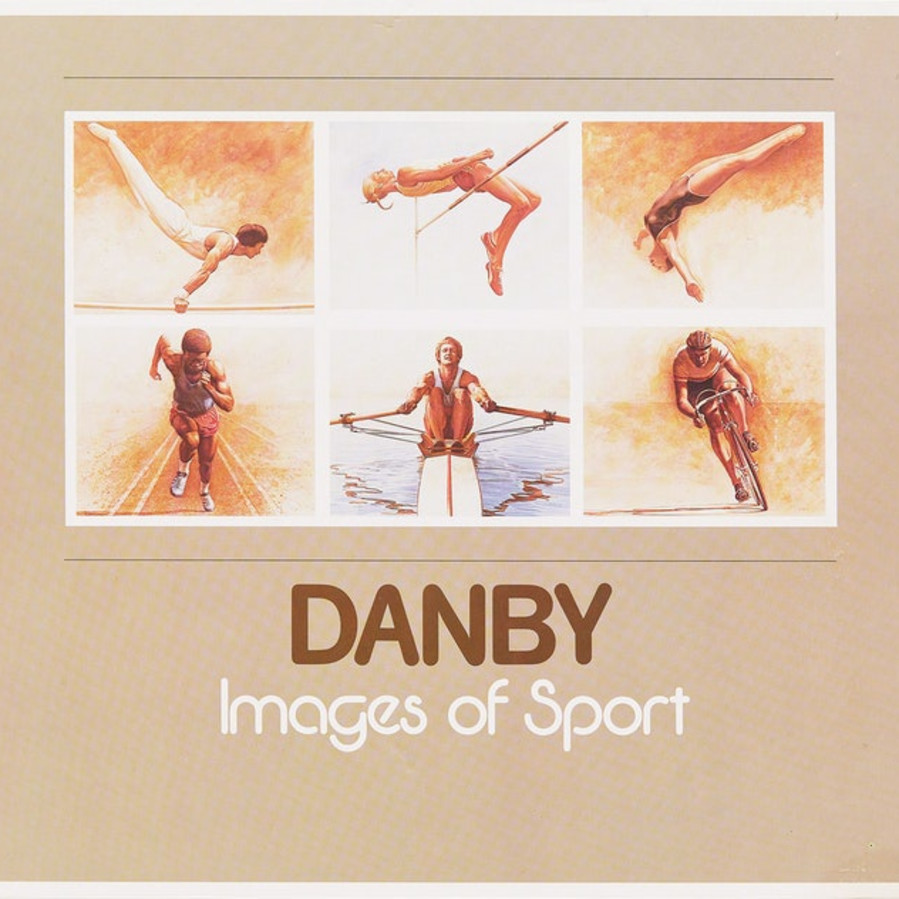
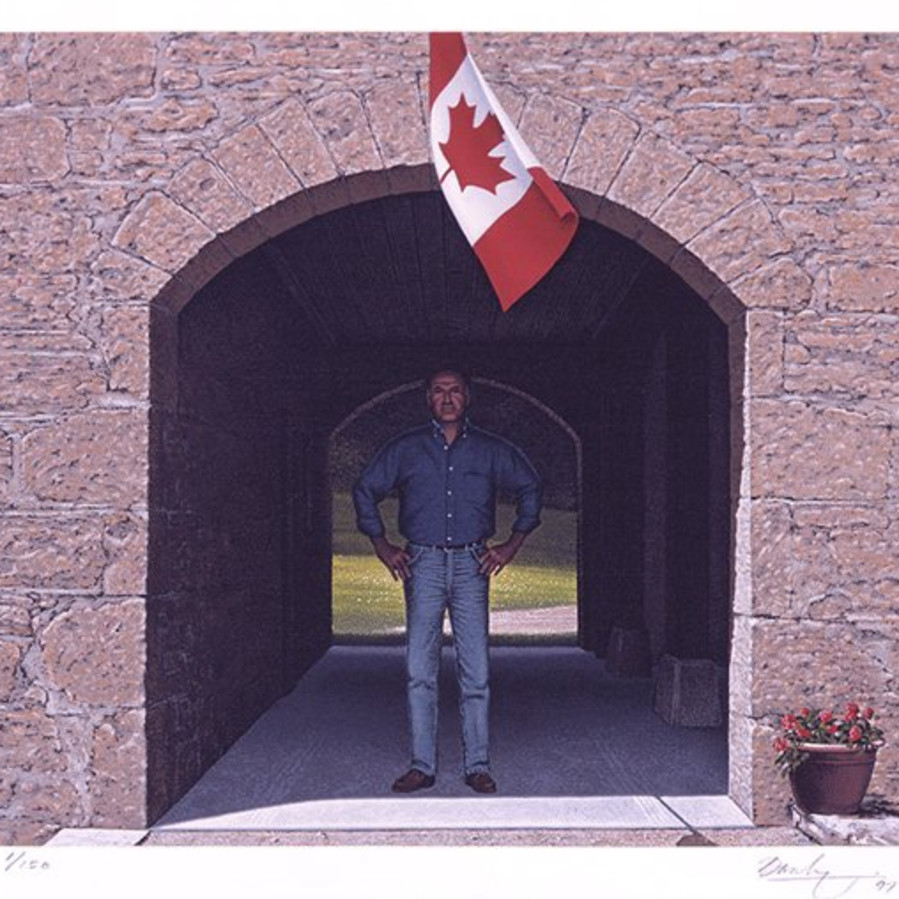
As an act of generosity, when Ken Danby sold the six watercolours to the Centre for a price of $3,600 each, he included a copyright in the purchase price. This granted the Centre the right to make prints to offer for sale to raise funds for the benefit of amateur sport in Canada. The prints were reproduced on two occasions: in 1976 with a book in an unlimited edition and then as limited edition serigraphs in 1978, in an edition size of 150 with the six images, but in a format smaller than the originals. Because of the notoriety these watercolours were given as reproductions, they have become as synonymous with Ken Danby as his iconic paintings, “Beyond the Crease” and “Lacing up,” which are among the most celebrated images of sport by any Canadian artist.
The vivid descriptions accompanying the individual paintings in this exhibition were published by Hubert de Santana in Danby: Images of Sport.
As was Ken Danby’s tradition of painting works of this type, he did use models who served his composition. It is important to note that since the artist was not painting portraits, he did not paint the facial features of the models. For instance, he intended to paint a cyclist athlete, not a specific cyclist. Until now, the identity of the models for the athletic disciplines he painted has never been published. It is with the assistance of research offered by Ken Danby's Estate, represented by his son Ryan, and notations from Mr Danby’s diaries about these watercolours that we can share the names of the athletes who inspired this important body of work.
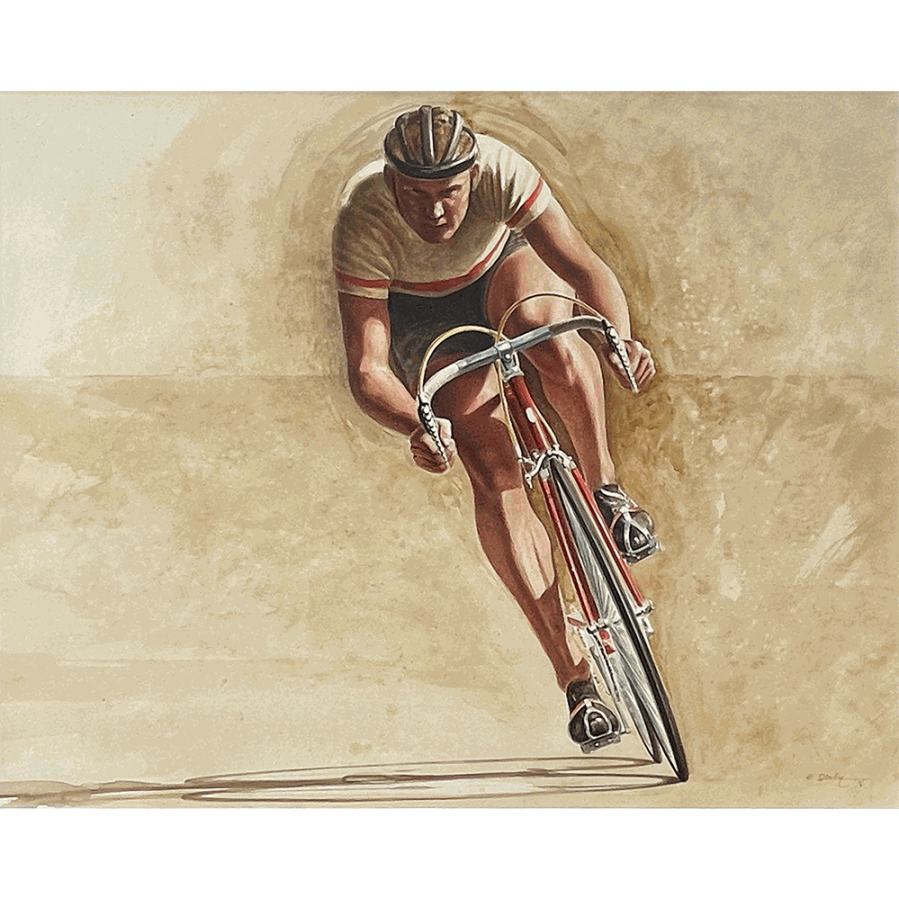
Jocelyn Lovell is a legend in the world of Canadian cycling. Lovell represented Canada in 3 Olympic games (1968, 1972, and 1976). From a number of perspectives, his is a storied career and worthy of study. ( A must read is “The cookie caper” ) Lovell won 6 medals at the Commonwealth, including 4 gold and 2 1000 meter golds at the Pan Am games plus dozens of other medals at Canadian and international cycling competitions. In August of 1983 while on a training ride in Northwest Toronto, Lovell was hit by a dump truck leaving him a quadriplegic. After his recovery, Lovell campaigned full time on behalf of The Spinal Cord Society of Canada to help find a cure for spinal cord injuries. In 2015, a year before his death, Lovell was made an inaugural member of the Canadian Cycling Hall of Fame.
“I met with Jocelyn Lovell before a cycling race at Queen's Park in Toronto, and then traveled to London, Ontario to take advantage of a second opportunity. He posed and performed for me during his warm ups without a hint of complaint, which I thought was truly admirable since I was intruding on his preparation. He was absolutely amazing in both races – literally outperforming all other cyclists by complete laps of the courses."
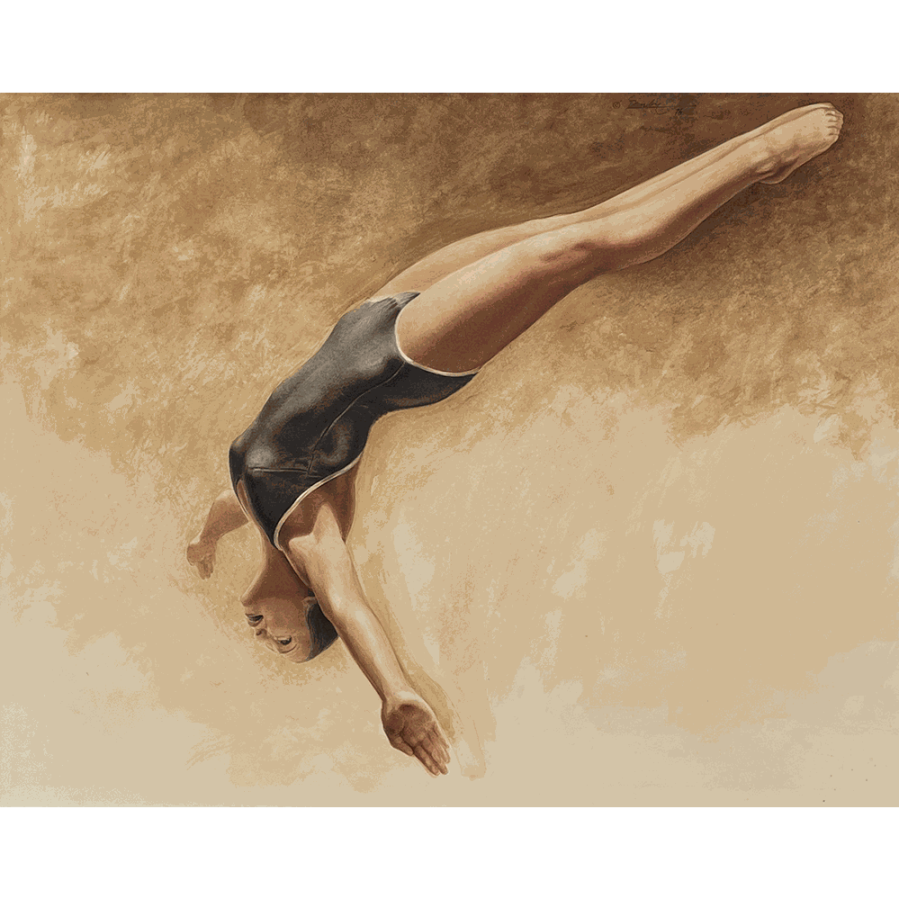

In addition to being an athlete, Masaki Naosaki is a former York University Physical Education Professor and Men’s Championship Gymnastics Team Assistant Coach. In 1988, Masaaki Naosaki was awarded the prestigious CAC (Coaching Association of Canada) Coaching Excellence Award. The award Honours coaches whose athletes have won medals at the World Championships, Special Olympics World Games, Olympic Games, and Paralympic Games. Naosaki was Canada’s men’s gymnastics coach for the 1988 and 1992 Olympic games and was the 12-time coach of the Canadian Men’s World Championships team.
“Masaki Naosaki, my gymnast, posed for me at the York University Athletic Centre, where we discussed the variety of gymnastic disciplines that would best suit my purposes. I decided that the parallel bars would be my first choice, with the rings being a close second. Masaki performed both for me many times, with unbelievable dexterity and control. 5”

Louise Hanna-Walker competed in Women’s high jump at both the 1972 and 1976 Olympic Games. Hanna-Walker won silver medals at the 1974 Commonwealth Games and 1975 Pan American Games. She received her silver medal at the ‘74 Commonwealth Games from her majesty, Queen Elizabeth II. In her later career, Hanna-Walker became a sports-medicine doctor helping rehab injured athletes. In April 2021, she was inducted into the Athletics Ontario Hall of Fame, which was her third honour of the sort. In 1993, she was inducted into the University of Toronto Sports Hall of Fame. In 2007, Hanna-Walker was inducted into the Nepean Sports Wall of Fame. She was also the Team Physician for the Canadian Women’s Hockey team at the Olympic and Commonwealth Games. Hanna-Walker retired from her sports-medicine career in 2014.
“By early October, I had accomplished a 'blitz' with my camera and sketchbook and felt that I had enough material to pursue 5 of my 6 disciplines. The only one left was my high jumper who was Louise Walker, one of Canada's best. I met Louise at her last competition of the outdoor season, in Hamilton, and she was very happy to cooperate. But, the weather was not good – cool and wet – and after some deliberation it was decided that Louise wouldn't be jumping after all. She was due to compete at the Pan-American Games in Mexico City in 10 days and jumping in unsatisfactory conditions here would be too risky.
Now, what could I do? To my mind, there was only one answer. I would have to go to Mexico City to observe our best high jumper perform! I notified the Sport and Recreation Centre of my intentions and they managed to get me registered for 'press accreditation' at the games. I flew to Mexico City on the 10th of October. Over a couple of days, attending her practice sessions, I managed to acquire sufficient images for my needs. Louise was most helpful and I tried to be as invisible as possible, so as not to interfere with her concentration during practice. She ultimately won the silver medal at the games."
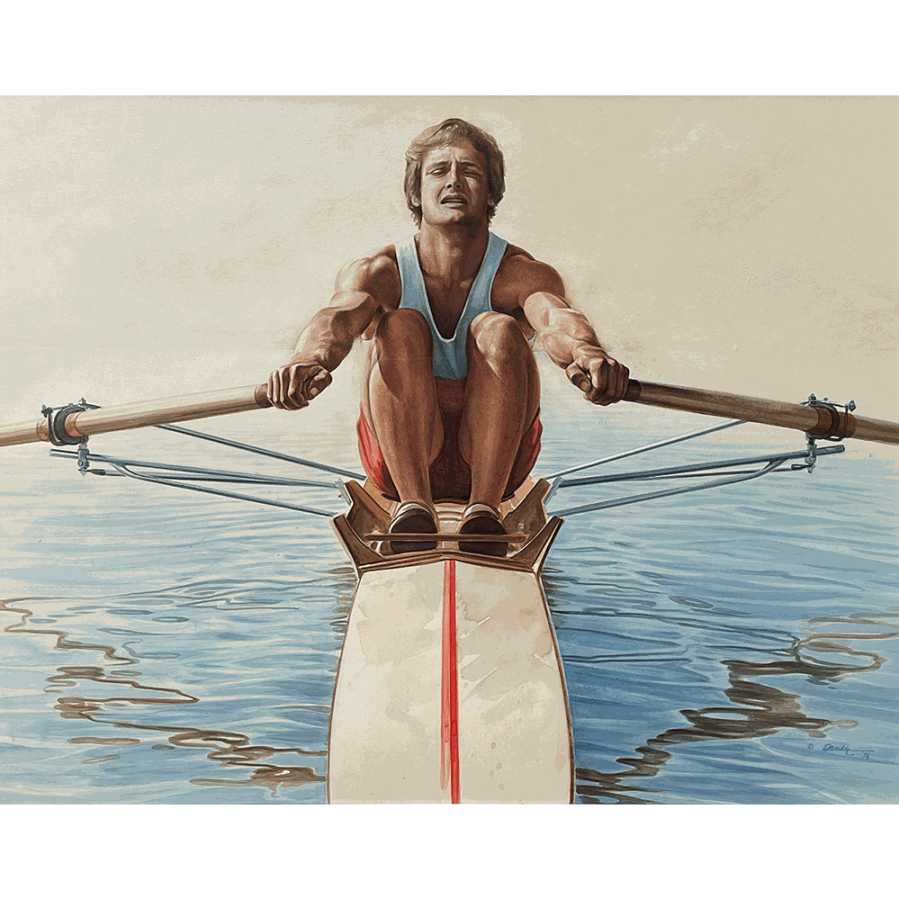

I decided on certain criteria that I felt were important to represent and this influenced my search for the most appropriate models. Above all, I knew that I had to locate the best athletes in order to ensure that my work would stand up to the scrutiny of the athletic community. At the same time, I concluded that the athletes would not be personally identified, as this would compromise the nature of the project, which was to depict athletes in action, not personalities.
However, many years later, I am pleased to confirm who became my models in this narrative, as a further note of gratitude and recognition to them (with one exception - which is that of my 'diver' who became a bit of a 'composite' of a few).
After a great many phone calls, messages and return calls, I managed to track down a few candidates, explain my project and request their assistance. Each was most gracious and interested in helping me represent their sport as well as possible. A Canadian track coach, Peter Manning, from Guelph, was most helpful in this respect.
I traveled to Toronto to work with my sprinter, Hugh Spooner, at a track in North York, where he performed a lot of starts and sprints for me, so I was able to assess the action I was looking for. A true gentleman, he was extremely helpful and cooperative, even though the heat was excessive that afternoon.
Pointe Claire, just south [ west ] of Montreal became my destination to observe women's diving competitions. This was the only discipline that I could not locate a specific athlete to 'pose' for, so I contented myself with observing many, with the idea of creating a definitive composite afterwards.
I met with Jocelyn Lovell before a cycling race at Queen's Park in Toronto, and then traveled to London, Ontario to take advantage of a second opportunity. He posed and performed for me during his warm ups without a hint of complaint, which I thought was truly admirable since I was intruding on his preparation. He was absolutely amazing in both races – literally outperforming all other cyclists by complete laps of the courses.
Masaki Naosaki, my gymnast, posed for me at the York University Athletic Centre, where we discussed the variety of gymnastic disciplines that would best suit my purposes. I decided that the parallel bars would be my first choice, with the rings being a close second. Masaki performed both for me many times, with unbelievable dexterity and control.
Brian Thorne was Canada's best lightweight single sculler, and he posed for me out on the water of the St. Catharines Rowing Club. I wanted to be on the water as well, so his coach provided me with a ride at the bow of his small aluminum boat, which he maneuvered back and forth for me, while Brian skimmed across the water ahead of us. Near the end of our posing session, the outboard motor broke down and Brian offered to tow us back to the rowing club. I held on to the stern of his rowing shell and he supplied the engine power to take us back! An amazing athlete!
By early October, I had accomplished a 'blitz' with my camera and sketchbook and felt that I had enough material to pursue 5 of my 6 disciplines. The only one left was my high jumper who was Louise Walker, one of Canada's best. I met Louise at her last competition of the outdoor season, in Hamilton, and she was very happy to cooperate. But, the weather was not good – cool and wet – and after some deliberation it was decided that Louise wouldn't be jumping after all. She was due to compete at the Pan-American Games in Mexico City in 10 days and jumping in unsatisfactory conditions here would be too risky.
Now, what could I do? To my mind, there was only one answer. I would have to go to Mexico City to observe our best high jumper perform! I notified the Sport and Recreation Centre of my intentions and they managed to get me registered for 'press accreditation' at the games. I flew to Mexico City on the 10th of October. Over a couple of days, attending her practice sessions, I managed to acquire sufficient images for my needs. Louise was most helpful and I tried to be as invisible as possible, so as not to interfere with her concentration during practice. She ultimately won the silver medal at the games.
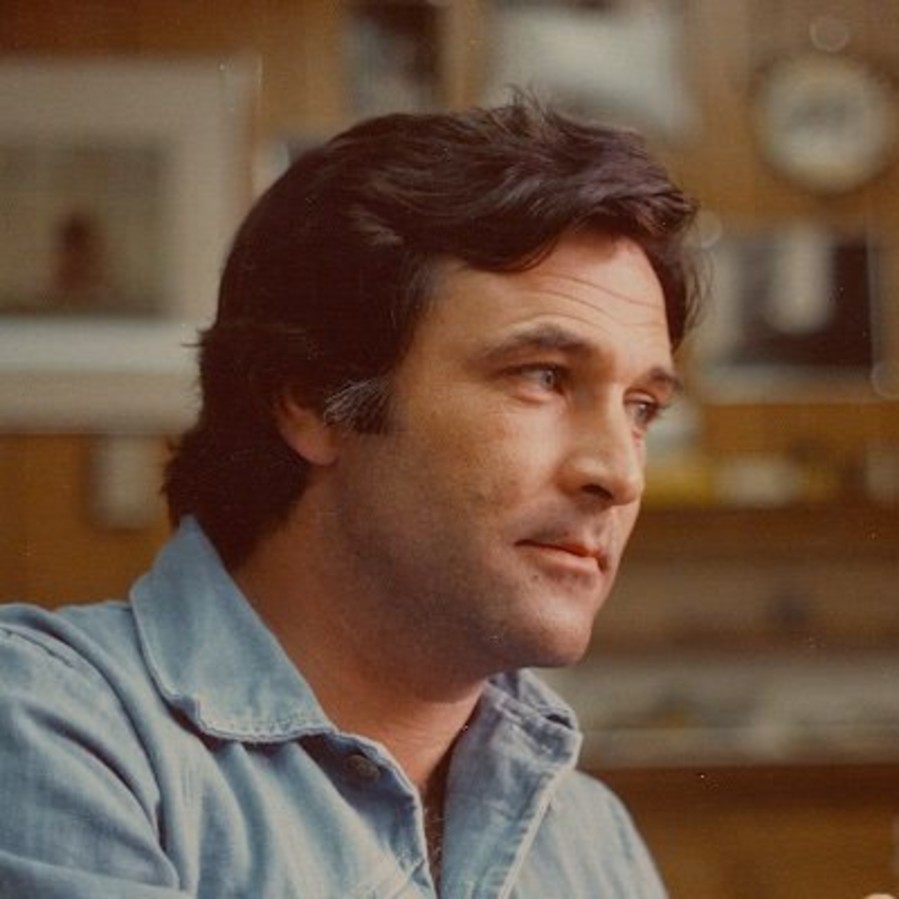
This website uses cookies
This site uses cookies to help make it more useful to you. Please contact us to find out more about our Cookie Policy.
1448 Sherbrooke St. West
Montreal, Quebec
H3G 1K4
Tel.: 514.284.9339
190 Davenport Rd
Toronto, Ontario
M5R 1J2
Tel.: 416.233.0339
Montreal: 514-284-9339
Toronto: 416-233-0339
Sell or Consign
Buy
Appraisals & Estate Planning
Framing & Restoration
About Us
Alan Klinkhoff Gallery is a fine art dealing firm
with a distinguished family tradition in
the art market since 1949.